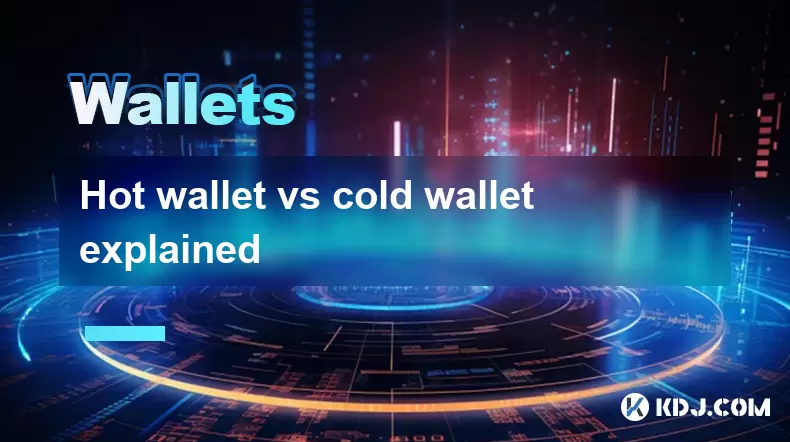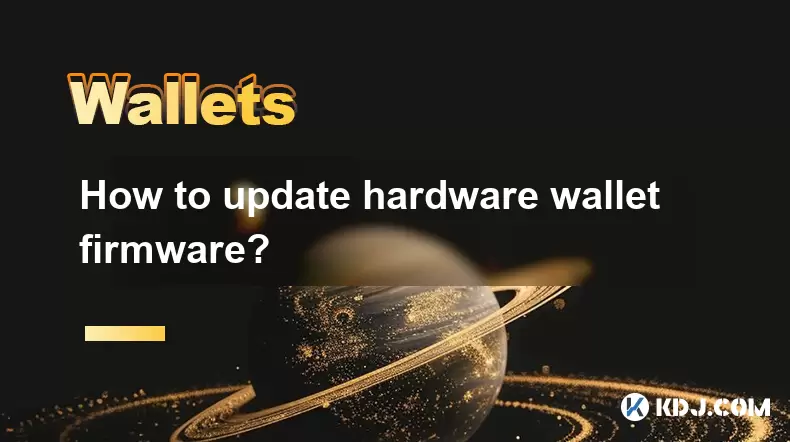-
 Bitcoin
Bitcoin $118,698.3676
0.16% -
 Ethereum
Ethereum $3,428.4877
5.97% -
 XRP
XRP $3.2496
9.52% -
 Tether USDt
Tether USDt $1.0002
0.00% -
 BNB
BNB $725.6930
4.36% -
 Solana
Solana $174.8923
4.52% -
 USDC
USDC $0.9997
-0.02% -
 Dogecoin
Dogecoin $0.2139
6.02% -
 TRON
TRON $0.3155
4.62% -
 Cardano
Cardano $0.8045
7.12% -
 Hyperliquid
Hyperliquid $46.6582
-1.72% -
 Stellar
Stellar $0.4676
0.80% -
 Sui
Sui $4.0143
0.38% -
 Chainlink
Chainlink $17.1546
2.97% -
 Hedera
Hedera $0.2458
3.27% -
 Bitcoin Cash
Bitcoin Cash $496.5967
-0.06% -
 Avalanche
Avalanche $22.8813
3.13% -
 Shiba Inu
Shiba Inu $0.0...01439
3.42% -
 UNUS SED LEO
UNUS SED LEO $8.8389
0.42% -
 Toncoin
Toncoin $3.2113
2.82% -
 Litecoin
Litecoin $101.2646
4.24% -
 Polkadot
Polkadot $4.2262
2.32% -
 Monero
Monero $340.4295
2.92% -
 Pepe
Pepe $0.0...01365
2.92% -
 Uniswap
Uniswap $8.9702
-2.78% -
 Bitget Token
Bitget Token $4.7675
2.00% -
 Dai
Dai $0.9998
-0.02% -
 Ethena USDe
Ethena USDe $1.0003
-0.04% -
 Aave
Aave $324.6394
-2.11% -
 Bittensor
Bittensor $433.6051
-0.88%
Hot wallet vs cold wallet explained
Hot wallets offer convenience for frequent crypto transactions, while cold wallets provide enhanced security for long-term storage.
Jul 17, 2025 at 05:28 pm

What Is a Hot Wallet?
A hot wallet is a type of cryptocurrency wallet that is connected to the internet. This allows for easy and quick access to digital assets, making it ideal for users who frequently send or receive cryptocurrencies. These wallets are typically software-based and can be accessed via desktop applications, mobile apps, or web browsers. Since they remain online, hot wallets offer convenience but come with increased security risks compared to offline storage solutions.
One key feature of a hot wallet is its ability to interact seamlessly with exchanges and decentralized platforms. Users can instantly trade or transfer funds without delays caused by connecting an offline device. However, because they are constantly online, hot wallets are more vulnerable to hacking attempts, phishing attacks, and malware infections.
Examples of popular hot wallets include Trust Wallet, MetaMask, and Electrum. Each provides varying levels of security features such as two-factor authentication (2FA) and encryption protocols to protect private keys stored online.
What Is a Cold Wallet?
A cold wallet refers to any cryptocurrency storage solution that is not connected to the internet. This makes cold wallets significantly more secure than their hot counterparts since there's no online attack surface for hackers to exploit. Cold wallets are often used for long-term storage of large amounts of digital assets where accessibility is less of a concern than security.
The most common types of cold wallets are hardware wallets and paper wallets. Hardware wallets, such as Ledger Nano S or Trezor Model T, store users' private keys on a physical device that only connects to a computer when a transaction needs to be signed. Paper wallets involve printing out a public address and its corresponding private key on paper, which is then stored securely offline.
Cold wallets are considered the gold standard for securing crypto holdings due to their immunity to online threats. However, they require careful handling—losing the physical device or damaging the printed key can result in irreversible loss of funds.
Security Differences Between Hot and Cold Wallets
The primary distinction between hot and cold wallets lies in their security mechanisms. Hot wallets, being online, expose private keys to potential breaches through compromised servers or malicious software. In contrast, cold wallets keep private keys entirely offline, reducing exposure to cyber threats.
Hot wallets rely heavily on encryption and multi-factor authentication to safeguard user data. Even so, if the service provider suffers a breach, user funds may still be at risk. Cold wallets eliminate this vulnerability by ensuring that signing transactions occurs offline, preventing remote access to private keys.
Another notable difference is recovery options. Most hot wallets offer cloud backups or password reset features, which can be both convenient and risky. Cold wallets usually depend on a recovery phrase written down during setup, which must be kept safe and inaccessible to others.
Ultimately, the choice between hot and cold storage depends on how frequently one intends to access their funds versus how much emphasis is placed on security.
Usability and Accessibility: Hot Wallet vs Cold Wallet
When comparing usability, hot wallets clearly have the advantage in terms of accessibility and ease of use. They allow for immediate transactions, integration with multiple platforms, and simple fund management through intuitive interfaces. Users can quickly send or receive cryptocurrency without needing to connect external devices or go through complex verification processes.
On the other hand, cold wallets require additional steps to execute transactions. For instance, using a hardware wallet involves physically connecting it to a computer or smartphone, entering a PIN, and confirming each transaction directly on the device. While these steps enhance security, they also make cold wallets less practical for daily trading or small purchases.
Moreover, hot wallets are often free or low-cost, whereas cold wallets usually require purchasing a physical device. This financial barrier may deter some users from opting for cold storage despite its superior protection against theft.
In summary, individuals who prioritize frequent access and seamless interaction with blockchain services tend to favor hot wallets. Those focused on preserving large sums of cryptocurrency over extended periods generally choose cold storage solutions.
Cost and Setup Considerations
Cost plays a significant role when choosing between hot and cold wallets. Many hot wallets are available at no charge, especially browser extensions and mobile apps. However, some premium versions might offer advanced security features or integrations that come with subscription fees.
Conversely, cold wallets typically require an upfront investment. Hardware wallets like Ledger or Trezor range from $50 to over $100 depending on model and features. Paper wallets, although essentially free to create, demand caution in printing and storing them properly to avoid damage or unauthorized access.
Setup procedures differ significantly between the two types. Creating a hot wallet generally involves downloading an app, setting up a password, and backing up a recovery phrase. Cold wallet setup includes initializing the hardware device, recording the recovery seed, and configuring security settings before first use.
Both wallet types require diligent attention to backup procedures. A lost recovery phrase or misplaced hardware device could lead to permanent loss of funds, emphasizing the importance of proper storage and documentation.
Frequently Asked Questions (FAQ)
Q: Can I use both a hot wallet and a cold wallet together?
Yes, many cryptocurrency users employ a hybrid strategy. They keep a small portion of funds in a hot wallet for daily transactions while storing the majority in a cold wallet for enhanced security.
Q: Are all cold wallets immune to hacking?
While cold wallets are highly secure due to their offline nature, they are not completely immune to physical theft or damage. It’s crucial to store recovery phrases safely and ensure the integrity of the hardware device.
Q: Do hot wallets support multiple cryptocurrencies?
Most modern hot wallets support a wide range of cryptocurrencies and tokens. However, compatibility varies by wallet provider, so users should verify supported coins before selecting a wallet.
Q: How do I recover my funds if I lose my cold wallet device?
Recovery relies on the backup recovery phrase generated during wallet setup. As long as this phrase is preserved securely, users can restore their funds on another compatible wallet or device.
Disclaimer:info@kdj.com
The information provided is not trading advice. kdj.com does not assume any responsibility for any investments made based on the information provided in this article. Cryptocurrencies are highly volatile and it is highly recommended that you invest with caution after thorough research!
If you believe that the content used on this website infringes your copyright, please contact us immediately (info@kdj.com) and we will delete it promptly.
- Silver Breaks 14-Year High: What's Driving the Rally?
- 2025-07-17 22:50:13
- Grok AI, Meme Coins, and Dogecoin: What's the Hype in 2025?
- 2025-07-17 23:10:11
- C2 Blockchain, DOG Coins, and Acquisition: A Meme-Native Bitcoin Asset
- 2025-07-17 20:30:12
- DeFi Evolution: Hyperion, HYPE Token, and the Hyperliquid Ecosystem
- 2025-07-17 21:30:12
- BlockDAG's NO VESTING PASS: A Crypto Game Changer Amid CRO & ONDO Swings
- 2025-07-17 21:30:12
- Ethereum, Pepe, Crypto: Navigating the Wild West of Digital Assets
- 2025-07-17 20:30:12
Related knowledge

How to find my 12 word phrase on Coinbase Wallet
Jul 17,2025 at 10:43pm
Understanding the 12 Word Phrase in Coinbase WalletThe 12-word phrase, also known as a recovery phrase or seed phrase, is a critical component of cryp...

Can I have multiple portfolios in Exodus?
Jul 17,2025 at 11:42pm
Understanding Exodus Wallet and Portfolio ManagementExodus is a popular desktop and mobile cryptocurrency wallet that supports a wide range of digital...

How to add custom tokens to Exodus
Jul 17,2025 at 08:57pm
Understanding Custom Tokens in ExodusExodus is a multi-asset wallet that supports a wide range of cryptocurrencies out of the box. However, there are ...

How to contact Exodus support?
Jul 17,2025 at 11:56pm
Understanding Exodus and Its Support SystemExodus is a popular cryptocurrency wallet that allows users to store, manage, and exchange various digital ...

How to update hardware wallet firmware?
Jul 17,2025 at 11:00pm
Understanding Hardware Wallet FirmwareA hardware wallet is a physical device used to securely store cryptocurrencies offline. These wallets come with ...

How to check my crypto wallet balance?
Jul 17,2025 at 06:28pm
Understanding Your Crypto Wallet BalanceWhen you hold cryptocurrencies, your wallet balance is a representation of the digital assets available for tr...

How to find my 12 word phrase on Coinbase Wallet
Jul 17,2025 at 10:43pm
Understanding the 12 Word Phrase in Coinbase WalletThe 12-word phrase, also known as a recovery phrase or seed phrase, is a critical component of cryp...

Can I have multiple portfolios in Exodus?
Jul 17,2025 at 11:42pm
Understanding Exodus Wallet and Portfolio ManagementExodus is a popular desktop and mobile cryptocurrency wallet that supports a wide range of digital...

How to add custom tokens to Exodus
Jul 17,2025 at 08:57pm
Understanding Custom Tokens in ExodusExodus is a multi-asset wallet that supports a wide range of cryptocurrencies out of the box. However, there are ...

How to contact Exodus support?
Jul 17,2025 at 11:56pm
Understanding Exodus and Its Support SystemExodus is a popular cryptocurrency wallet that allows users to store, manage, and exchange various digital ...

How to update hardware wallet firmware?
Jul 17,2025 at 11:00pm
Understanding Hardware Wallet FirmwareA hardware wallet is a physical device used to securely store cryptocurrencies offline. These wallets come with ...

How to check my crypto wallet balance?
Jul 17,2025 at 06:28pm
Understanding Your Crypto Wallet BalanceWhen you hold cryptocurrencies, your wallet balance is a representation of the digital assets available for tr...
See all articles

























































































